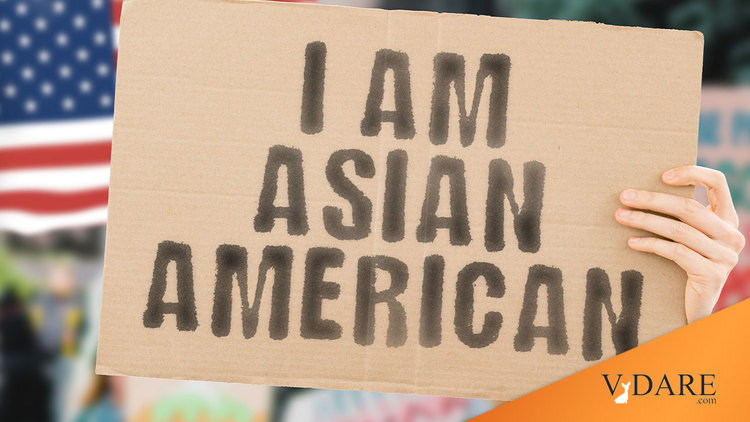Back in the later 20th century, the federal government grouped together Asians or Pacific Islanders into a single statistical race. But Pacific Islander groups not unreasonably complained that, compared to Asians, they have different strengths (such as strength) and weaknesses (such as being not as clever at math), so lumping them in with the larger Asian race meant government statistics were useless for noticing anything about Pacific Islanders. So, in 1997 the Office of Management and Budget broke out “Native Hawaiians and Other Pacific Islanders” as a race separate from Asians.
So, after using the term a fair amount in the 1990s, the New York Times never used the term “Asian or Pacific Islander” from 2010 through 2014. And it never used the acronym AAPI (for Asian American–Pacific Islander) until 2012, then once in 2016, once again in 2018, then twice in 2019. Then nine times in 2020.
Then in 2021, there was an explosion of uses of “AAPI” first in February 2021, when various black thugs were videoed knocking down tiny Asians (but, not surprisingly, not giant Pacific Islanders) and a Leftist group called Stop AAPI Hate became the media’s go-to source for how this was all Trump’s fault for saying the words “China virus” ten months before. Stop AAPI Hate is a new COVID-era name for a coalition of old-time Mau-Mauing the Flak Catcher Leftist San Francisco groups like Chinese for Affirmative Action.
Then in March 2021, a white guy shot up some massage parlors, killing six Asian women, and “AAPI” was used over and over again. This set of murders generated (and still generates) a vast amount of journalistic comment, unlike the murder of 10 people in Boulder a week later, which disappeared down the memory hole when the white-looking shooter turned out to be named Ahmad Al Aliwi Al-Issa, an immigrant who was angry about white racism and Islamophobia.
But soon the “Asian and Pacific Islander” trope was spreading to other types of articles, such as this one from May 18, 2021:
Stereotypes Are Rife Among Asian and Pacific Islander Film Roles, Study Finds
Two-thirds of characters reflect stereotypes, and just 3.4 percent of movies had leads or coleads who were Asians or Pacific Islanders, the study of 1,300 movies found.
By Sarah Bahr
May 18, 2021
Of the 1,300 top-grossing films released from 2007 through 2019, just 44 featured an Asian or Pacific Islander character in a leading role — and one-third of the roles went to a single actor, Dwayne Johnson, a study has found.
My headline would have been: “Large Movie Stars Who Are Part-Pacific Islander—Such as The Rock, Jason Momoa, and Keanu Reeves—Are Extremely Over-Represented as Action Heroes.” Not that I’m complaining—I’ve spent a lot of money over the years to see these guys.
The other reason you are seeing Asian-American Pacific Islanders a lot is because of Asian American and Pacific Islander Heritage Month (May), which traces back to the Carter Administration, at a time when nobody could be bothered to break out the two groups. In the past, this ranked up there with National Asbestos Awareness Day, but our culture has become so obsessively antiquarian about the various Hate YT History Months that lately it’s a big deal.
[Comment at Unz.com]













